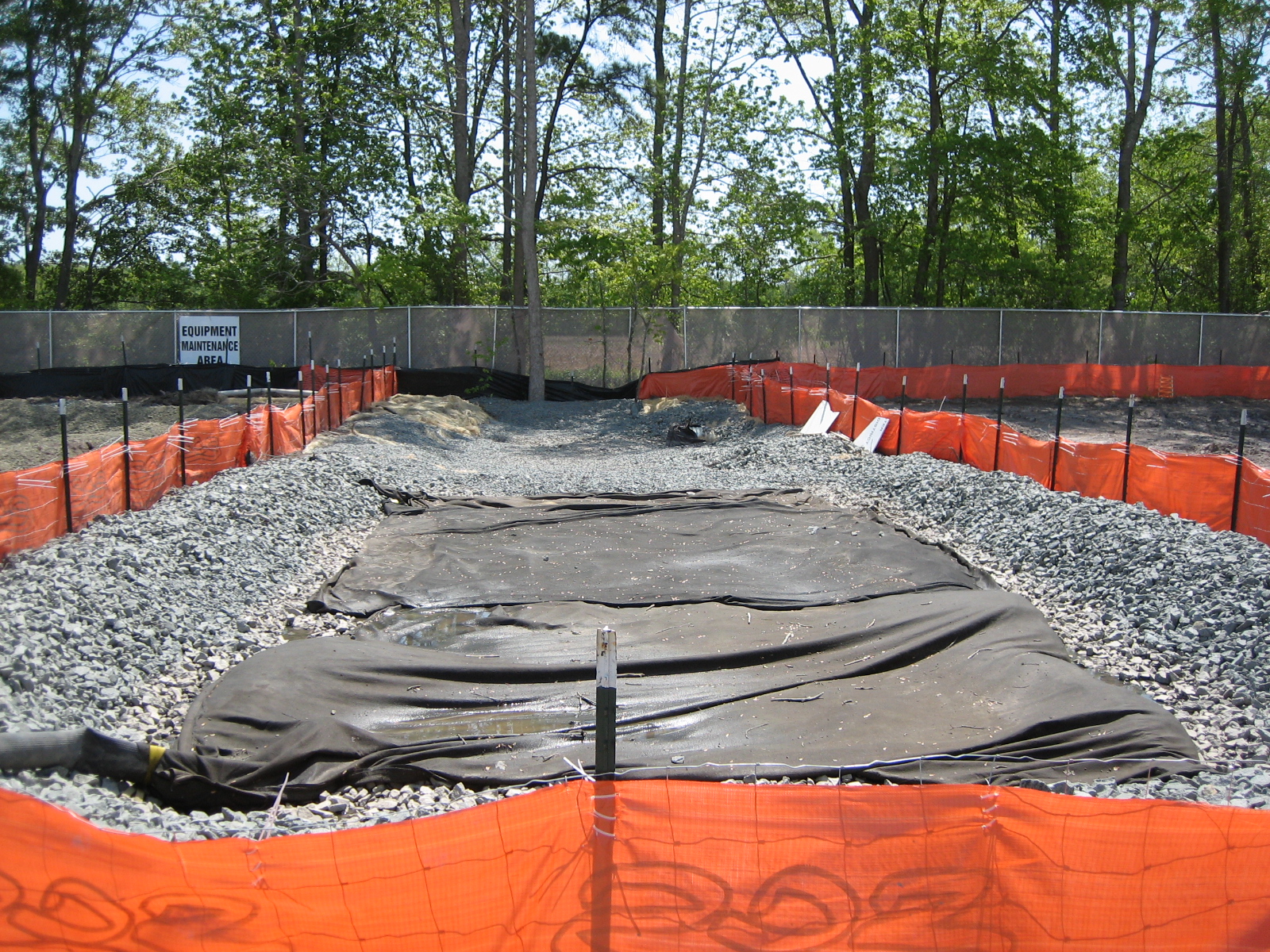Construction Dewatering

Purpose & Applications
Construction dewatering is a necessary operation on most construction sites in the Massachusetts. Excavations that do not result in a daylight drain, or have insufficient slope onsite to easily provide daylight drains, trap either rainwater or groundwater within the excavation. Similarly, coffer dams collect rain, ground or seepage water within the work area. For construction projects, this water needs to be removed before certain operations can be performed or to keep work conditions safe. It is typical for contractors to use ditch pumps to dewater these enclosed areas, but pay little attention to the location of the outlet and where the pumped water goes. Often, the pumped water finds its way to a sensitive downgradient area such as a lake, wetland, or a stream that must be protected. This practice examines the best ways to deal with this discharge of collected water and is designed to:
- Prevent the discharged water from eroding soil on the site.
- Choose the best location for discharge.
- Remove sediment from the collected water.
- Preserve downgradient natural resources and property.
Considerations
- The discharge areas should be chosen with careful consideration to the down gradient water resources and the landscape ability to treat water flows from the dewatering process. A wooded buffer is best. The discharge should be stopped immediately if the receiving area is showing any sign of instability or erosion.
- If the collected runoff is contaminated with oil, grease, or other petroleum products, oil/water separator or a filtration mechanism may be necessary prior to the discharge. Another method of disposal such as containment and trucking away by a Massachusetts DEP licensed transporter will need to be implemented if the water has been contaminated by toxic and hazardous materials.
- All requirements of state law and permit requirements of local, state, and federal agencies must be met.
Specifications
Dewatering excavated areas must be in two distinct phases; (1) the removal of the collected water within the excavation, and (2) the treatment of the collected water.
Physical Dewatering
The removal of water from the excavated area can be accomplished by numerous methods. The most common of these are: gravity drain through daylight channels, mechanical pumping, siphoning, and using the bucket of construction equipment to scoop and dump water from the excavation.
- Channels dug for discharging water from the excavated area need to be stable. If flow velocities cause erosion within the channel then a ditch lining should be used.
- Bucketed water should be discharged in a stable manner to the sediment removal area. A splash pad of riprap underlain with geotextile may be necessary to prevent scouring of the soil in the basin.
- Dewatering in periods of intense, heavy rain, when the infiltrative capacity of the soil is exceeded, should be avoided.
Sediment Removal
Many methods of settling or filtering sediment are available for the contractor to consider.
- Flow to the sediment removal structure may not exceed the sediment removal structure’s capacity to settle and filter flow or the structure’s volume capacity.
- Sediment Removal Basins should discharge wherever possible to a well-vegetated buffer through sheet flow and should maximize the distance to the nearest water resources and minimizing the slope of the buffer area.
- Various basin designs have been proposed in past projects.
- An enclosure of Jersey Barriers lined with a large piece of slit tape geotextile.
- A temporary enclosure constructed with hay bales, silt fence, or both. Erosion control mix also may be incorporated with silt fence or hay bales.
- Direct discharge of lightly sediment bearing water may be able to go directly into well buffered areas with 0-2% slope as long as a method of spreading flow into sheet flow is available.
- Discharge to a manufactured/pre-made structure specifically designed for sediment removal, like a Silt Sak, Silt Bag, or other similar product.
- Concrete or steel settling chambered systems for sediment removal.
- Excavated or bermed sedimentation ponds or structures. Side slopes no greater than 2 to 1, or with a combined interior and exterior slope of no greater than 5 to 1.
- A stormwater detention pond may be used as a stilling basin during construction. However, a sediment barrier needs to be installed to the outlet structure to prevent the discharge of sediment.
Installation Requirements
For trench excavation, limit the trench length to 500 feet and place the excavated material on the up gradient side of the trench.
- Install diversion ditches or berms to minimize the amount of clean stormwater runoff allowed into the excavated area.
- Never discharge to areas that are bare or newly vegetated.
Maintenance
During the active dewatering process, inspection of the dewatering facility should be reviewed frequently. Special attention should be paid to the buffer area for any sign of erosion and concentration of flow that may compromise the buffer area. Observe where possible the visual quality of the effluent and determine if additional treatment can be provided.